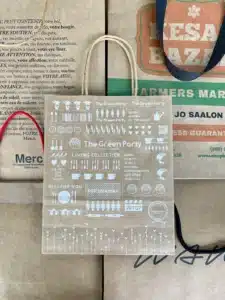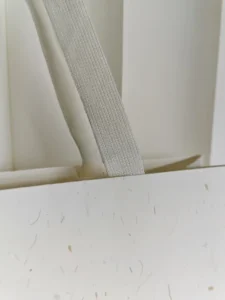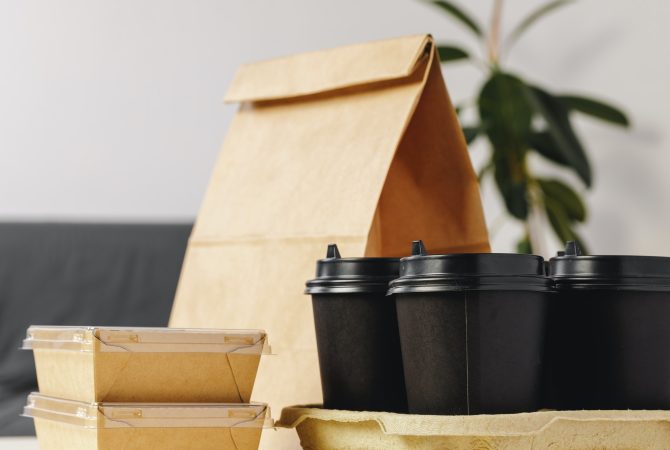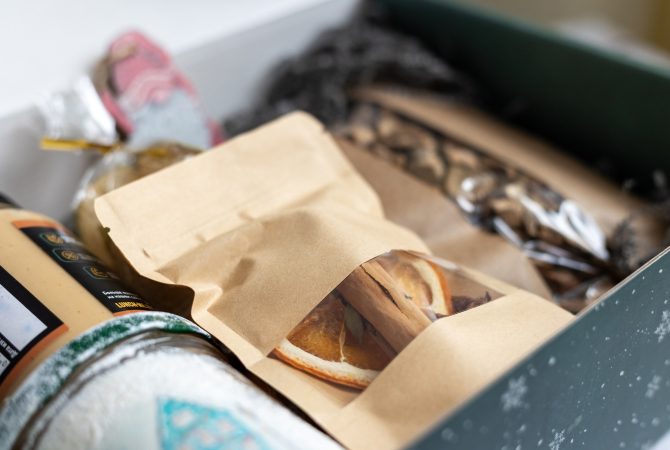Are you confused about which eco-friendly packaging option will work best for your business needs?
Biodegradable packaging breaks down naturally through microorganisms, recyclable materials can be reprocessed into new products, while recycled packaging uses renewable sources like sugarcane and corn paper with the highest environmental standards.
Understanding the differences between these three sustainable packaging options is crucial for making informed decisions that align with both your environmental goals and business requirements. With consumers increasingly prioritizing sustainability, choosing the right eco-friendly solution can significantly impact your brand’s success and customer loyalty.
What Makes Biodegradable Packaging the Natural Choice for Short-Term Use?
Does your business need packaging that disappears without leaving harmful traces in the environment?
Biodegradable packaging decomposes naturally via microorganisms into harmless substances like water, carbon dioxide, and biomass, making it ideal for food service and short-term packaging needs.
Understanding Biodegradable Materials and Applications
Biodegradable packaging represents one of the most environmentally conscious choices available today. These materials are specifically designed to break down through natural biological processes, effectively reducing waste accumulation in landfills and oceans.
The key advantage of biodegradable packaging lies in its ability to return to nature without leaving toxic residues. Common materials in this category include:
- Yellow kraft paper: Breaks down within 2-6 weeks under composting conditions
- White kraft paper: Offers similar decomposition rates with enhanced visual appeal
- Both types are derived from renewable wood sources
Bioplastic Alternatives:
- PLA (Polylactic Acid): Made from corn starch, decomposes under industrial composting
- Sugarcane-based plastics: Utilize agricultural byproducts for sustainable production
- Vegetable starch films: Provide flexible packaging solutions with natural breakdown
Performance and Limitations
While biodegradable packaging offers exceptional environmental benefits, it requires specific conditions to decompose effectively, particularly industrial composting facilities that maintain optimal temperature and humidity levels. The decomposition timeline varies significantly based on environmental conditions, with kraft paper breaking down in 2-6 weeks under home composting, while PLA bioplastic requires 90-180 days in industrial facilities.
Why Should You Consider Recyclable Packaging for Long-Term Value?
Looking for packaging solutions that can be transformed into new products while conserving natural resources?
Recyclable packaging can be collected, processed, and reused to create new products, reducing virgin material consumption and supporting circular economy principles through established recycling infrastructure.
Core Recyclable Materials and Benefits
Recyclable packaging forms the backbone of sustainable packaging strategies, offering proven environmental benefits through established collection and processing systems. The effectiveness depends largely on local infrastructure and consumer participation.
Paper and Cardboard Solutions:
These materials represent the most widely recycled packaging options, with established collection systems in most regions. However, quality decreases with each recycling cycle, typically allowing 4-5 recycling rounds before fibers become too short for effective reprocessing.
Plastic Recycling Categories:
Not all plastics are equally recyclable. PET (polyethylene terephthalate) and HDPE (high-density polyethylene) enjoy widespread acceptance in recycling facilities, while other plastic types face limited processing options.
Innovation in Design
Creative packaging designs can significantly extend material lifecycles before final recycling. Notable examples include children’s packaging featuring detachable puzzle pieces that can be reused for play, effectively doubling or tripling the material’s useful life before entering the recycling stream. Mono-material designs simplify recycling by eliminating the need for material separation and reducing contamination risks.

What Are the Benefits of Using Recycled Materials in Packaging for a Greener Future?
Are you seeking packaging materials that demonstrate the highest environmental standards from their very source?
Recycled packaging materials made from renewable sources like sugarcane and corn paper offer the most demanding environmental standards, combining sustainable agriculture with recyclability for maximum environmental benefit.
[image placeholder]
Bio-Based Recycled Materials
The term "recycled" in sustainable packaging contexts often refers to materials derived from renewable, bio-based sources that maintain high environmental standards throughout their lifecycle. These materials represent the most environmentally demanding category due to their renewable origin and end-of-life recyclability.
Sugarcane-Based Paper Products:
Sugarcane bagasse, a byproduct of sugar production, creates tree-free paper alternatives with exceptional environmental credentials. This material utilizes agricultural waste that would otherwise be burned or discarded, transforming it into valuable packaging material. The production process requires significantly less energy compared to traditional wood-based paper while offering similar strength and printing characteristics.
Corn-Derived Materials:
Corn starch forms the basis for various packaging applications, from flexible films to rigid containers. PLA derived from corn offers biodegradability under industrial composting conditions while providing recyclability in specialized facilities. The agricultural source supports sustainable farming practices and reduces dependence on fossil fuel-derived plastics.
Environmental Impact and Performance
Bio-based recycled materials often present unique performance characteristics that differ from traditional packaging materials. Many bio-based materials, particularly PLA, have lower heat resistance compared to petroleum-based plastics, affecting applications involving hot-fill products or high-temperature storage conditions. Some plant-based materials show increased sensitivity to moisture, requiring additional barrier coatings for products requiring extended shelf life.
How Do These Three Packaging Types Compare in Practice?
Need a clear comparison to make the right choice for your specific business requirements?
Each packaging type serves different purposes: biodegradable excels for food service, recyclable works best for consumer goods, while recycled bio-based materials offer premium sustainability for high-end brands.
Comprehensive Analysis
Understanding practical differences requires examining multiple factors affecting both environmental impact and business operations. Food service businesses benefit most from biodegradable options like sugarcane bagasse tableware, which handles both hot and cold foods while decomposing naturally after use. Retail brands often prefer recyclable materials due to established collection systems and consumer familiarity.
Cost Structure Overview:
Biodegradable materials typically cost 15-30% more initially but reduce waste disposal fees. Recyclable materials maintain standard pricing with potential material recovery value. Recycled bio-based materials command 20-40% premiums but offer premium pricing opportunities for environmentally conscious consumers.
Performance Metrics:
Each type demonstrates different strengths across environmental metrics. Biodegradable materials excel in waste reduction, recyclable materials conserve resources through reuse, while recycled bio-based materials show the lowest overall environmental impact considering renewable sourcing and carbon footprint reduction.
What Implementation Strategy Works Best?
Ready to transition but unsure about the best approach for your business?
Successful sustainable packaging transitions require phased implementation, starting with pilot programs, engaging suppliers early, and measuring results continuously to optimize performance.
Strategic Planning Process
The transition requires careful planning and systematic execution to minimize disruption while maximizing benefits. Beginning with pilot programs allows businesses to test sustainable materials on limited product lines, reducing risk while generating valuable performance data.
Phase-Based Approach:
Initial phases should focus on products with highest environmental impact or those targeting environmentally conscious consumer segments. Success in these areas builds internal confidence and provides case studies for broader implementation. Subsequent phases can expand based on lessons learned and proven metrics.
Supplier Relationships:
Early supplier involvement proves critical, as sustainable packaging often requires specialized materials or modified production processes. Long-term partnerships with sustainable packaging suppliers yield better pricing, priority access to new materials, and collaborative development opportunities.
Performance Measurement
Establishing key performance indicators specific to sustainable packaging helps track progress and identify optimization opportunities. Metrics should include environmental impact, cost effectiveness, and operational efficiency measures. Regular reporting provides visibility across the organization, enabling data-driven decisions and continuous improvement.
Technology Integration:
Modern operations benefit from technology integration and automation systems that improve efficiency while reducing costs. Equipment modifications may be necessary to handle sustainable materials effectively, but these investments often improve overall packaging efficiency and reduce labor requirements.
Get Premium Finishing For Your Designs At OPACK
Looking for a reliable and nice price supplier? OPACK is your trusted partner for creating stunning designs that leave a lasting impression and add elegance and sophistication to your packaging. Contact us now to order.
Conclusion
Choosing between biodegradable, recyclable, and recycled packaging requires careful consideration of business needs, environmental goals, and cost implications for optimal sustainable packaging strategy.










